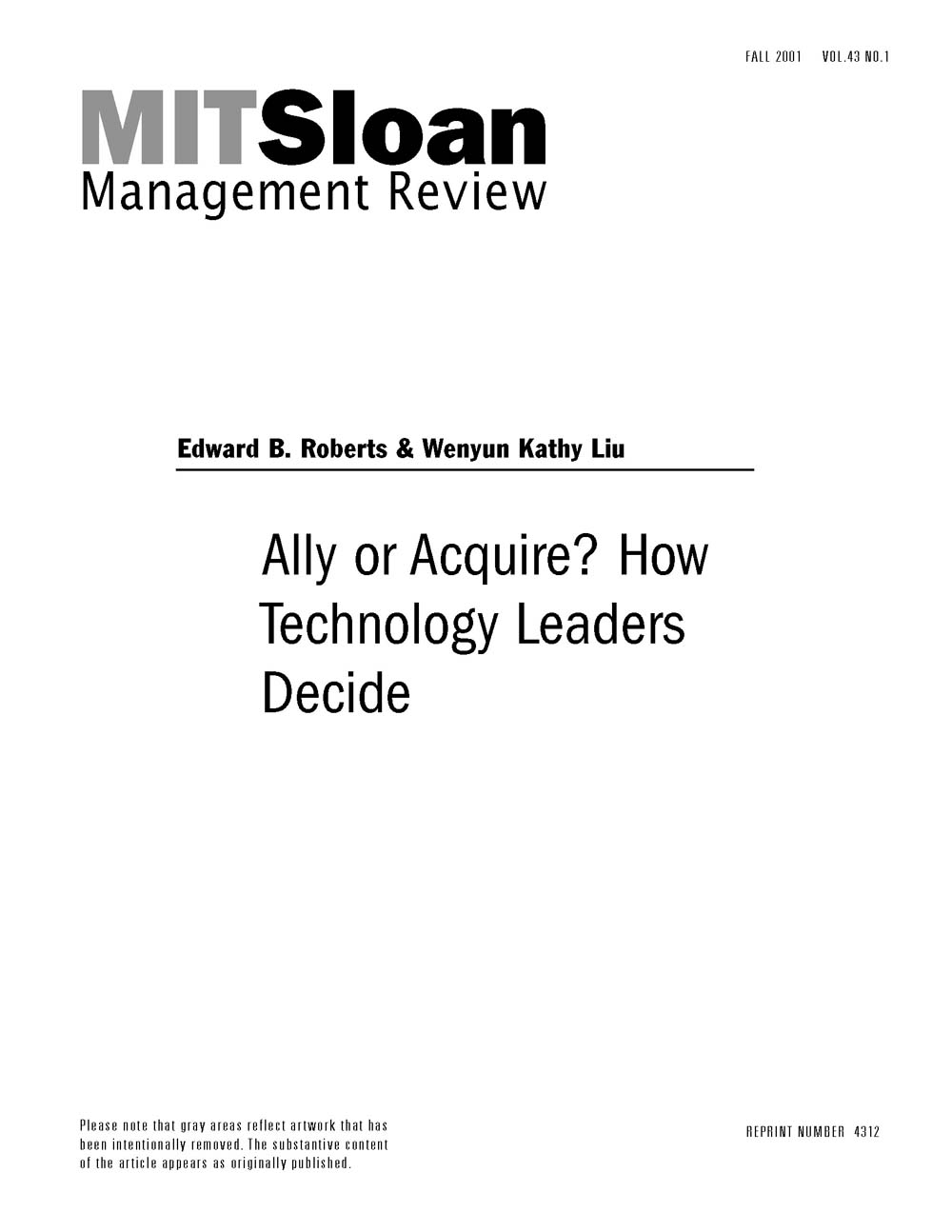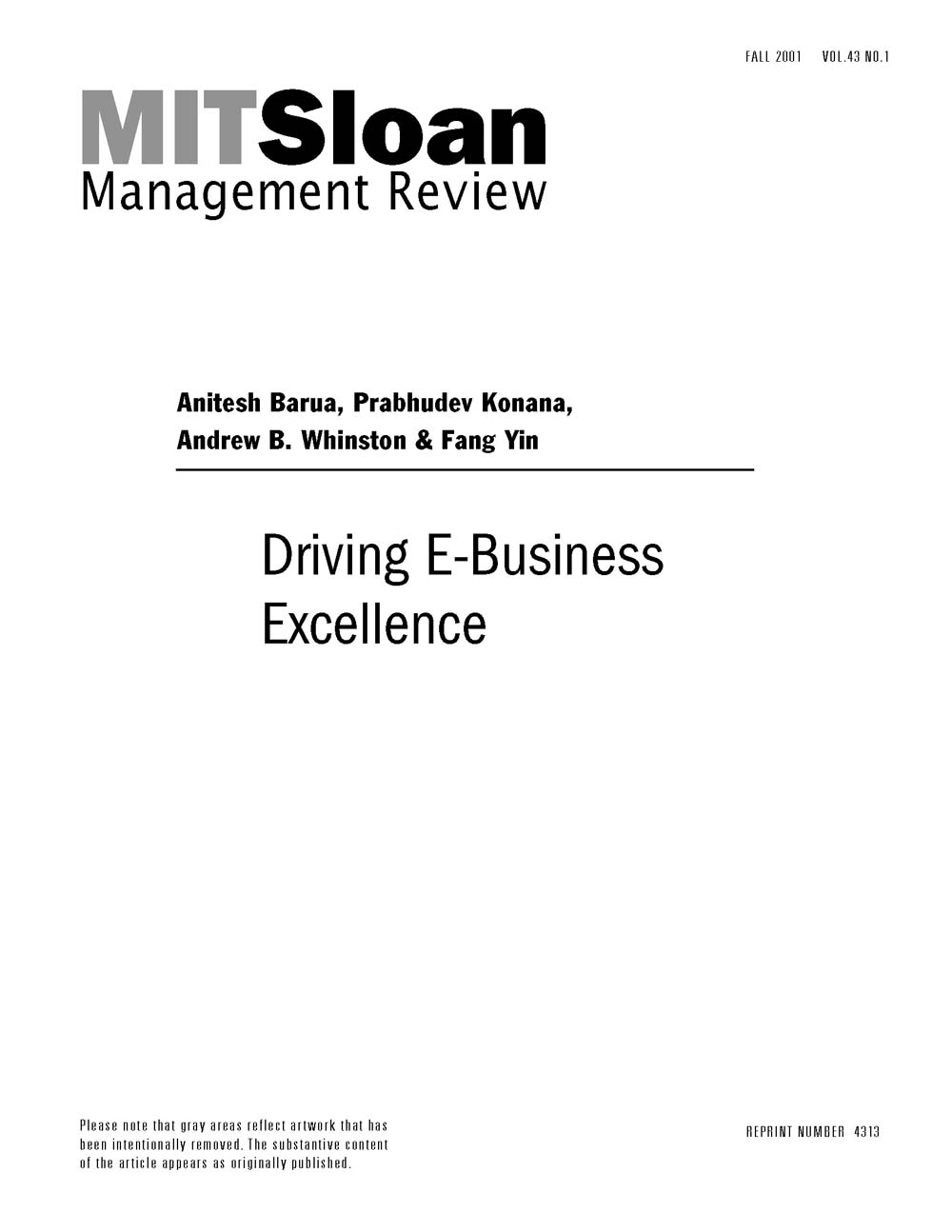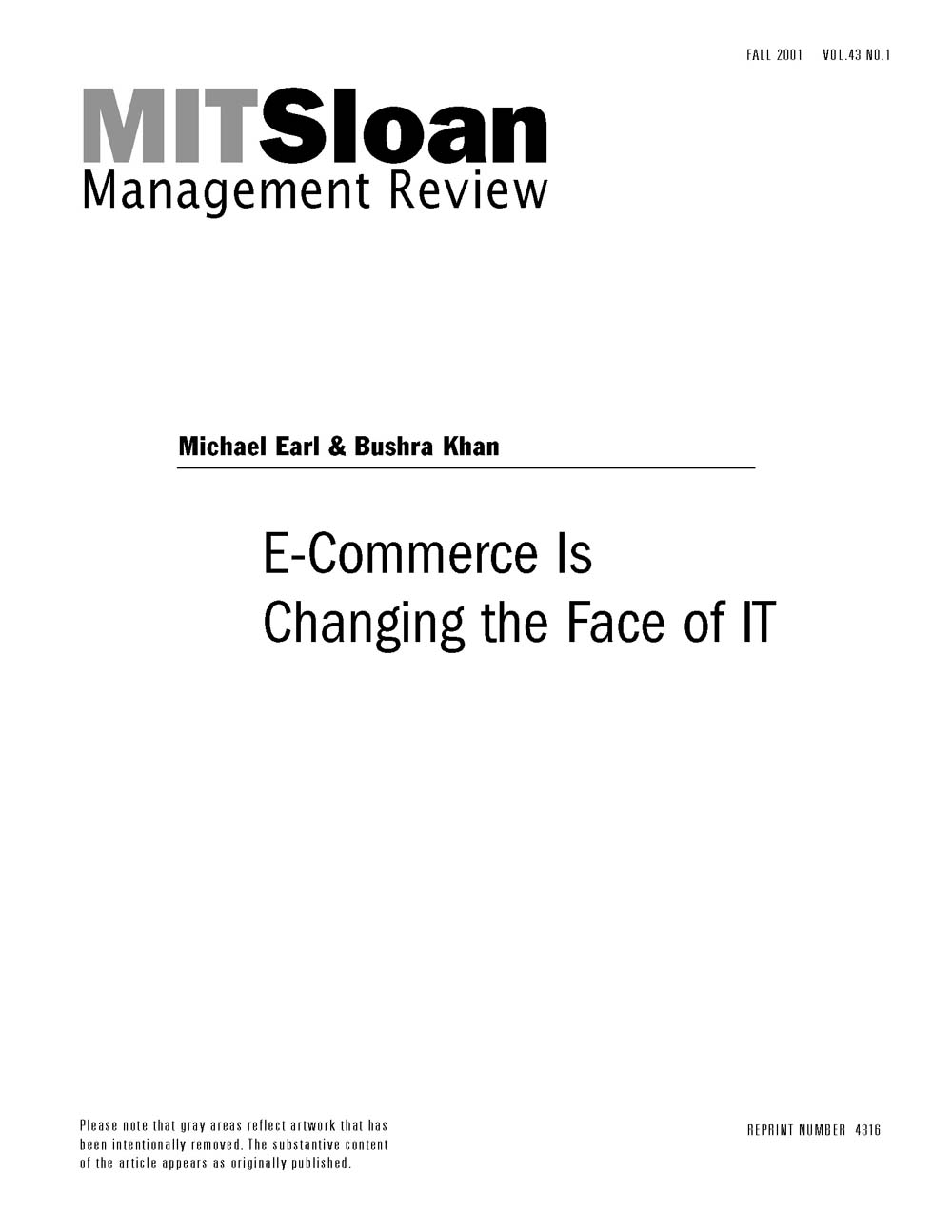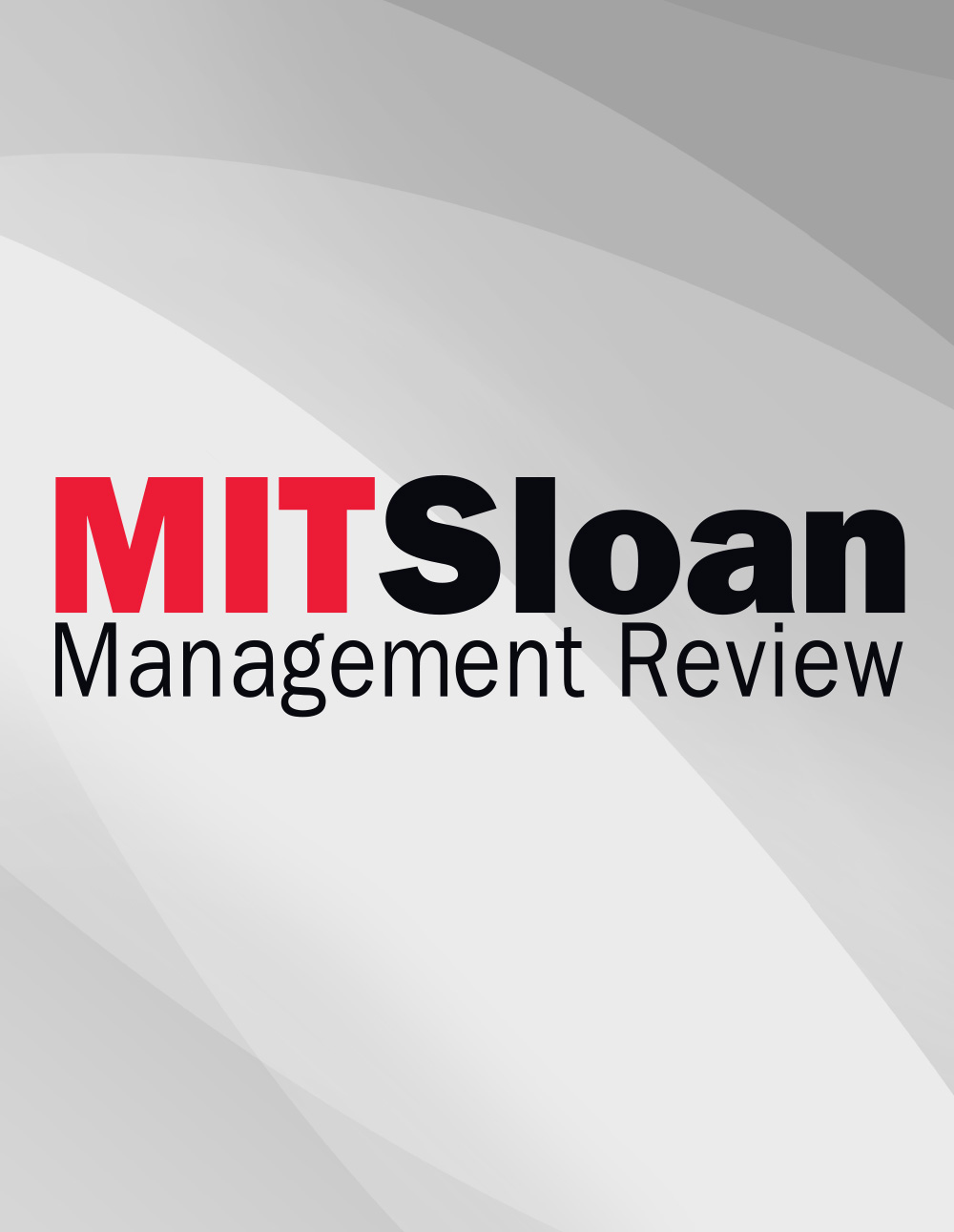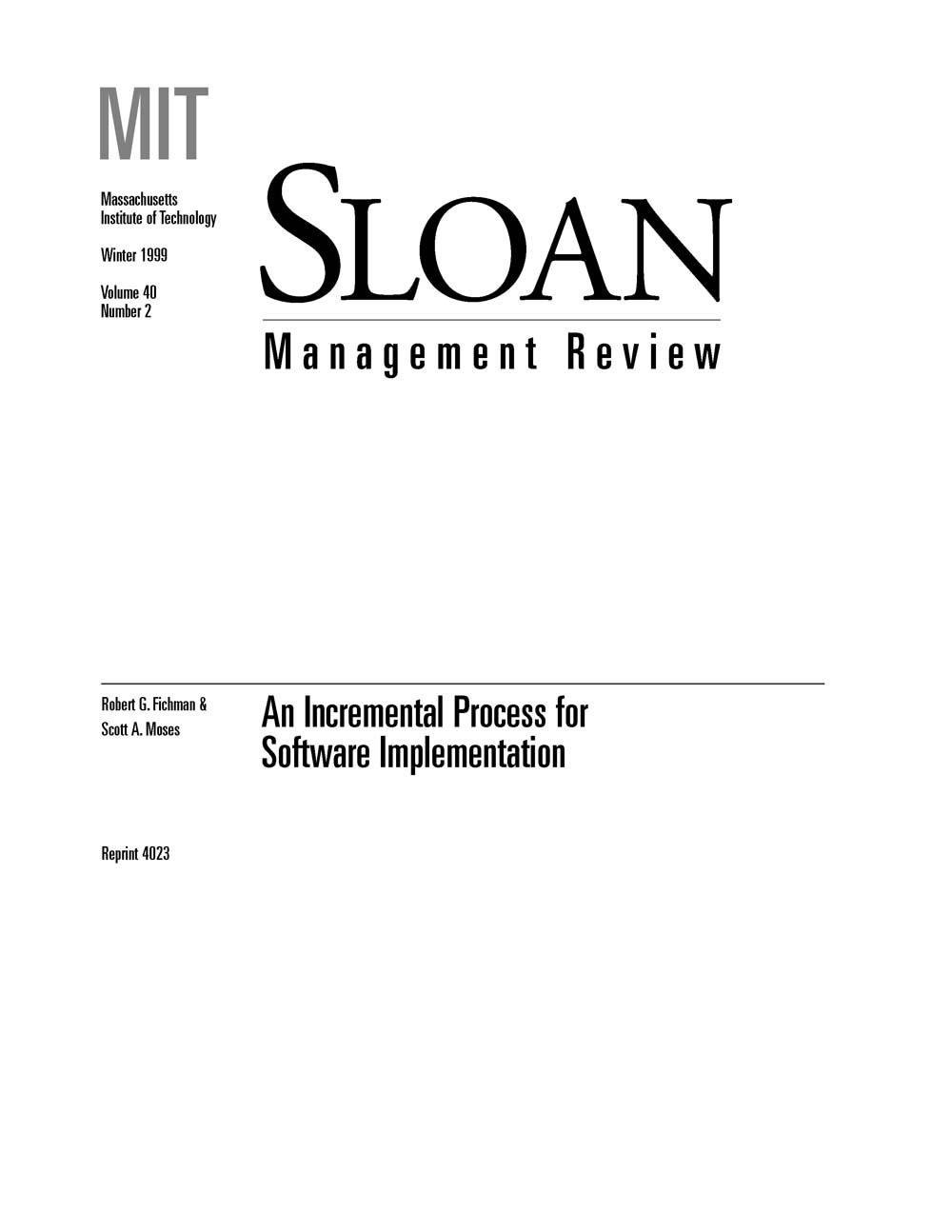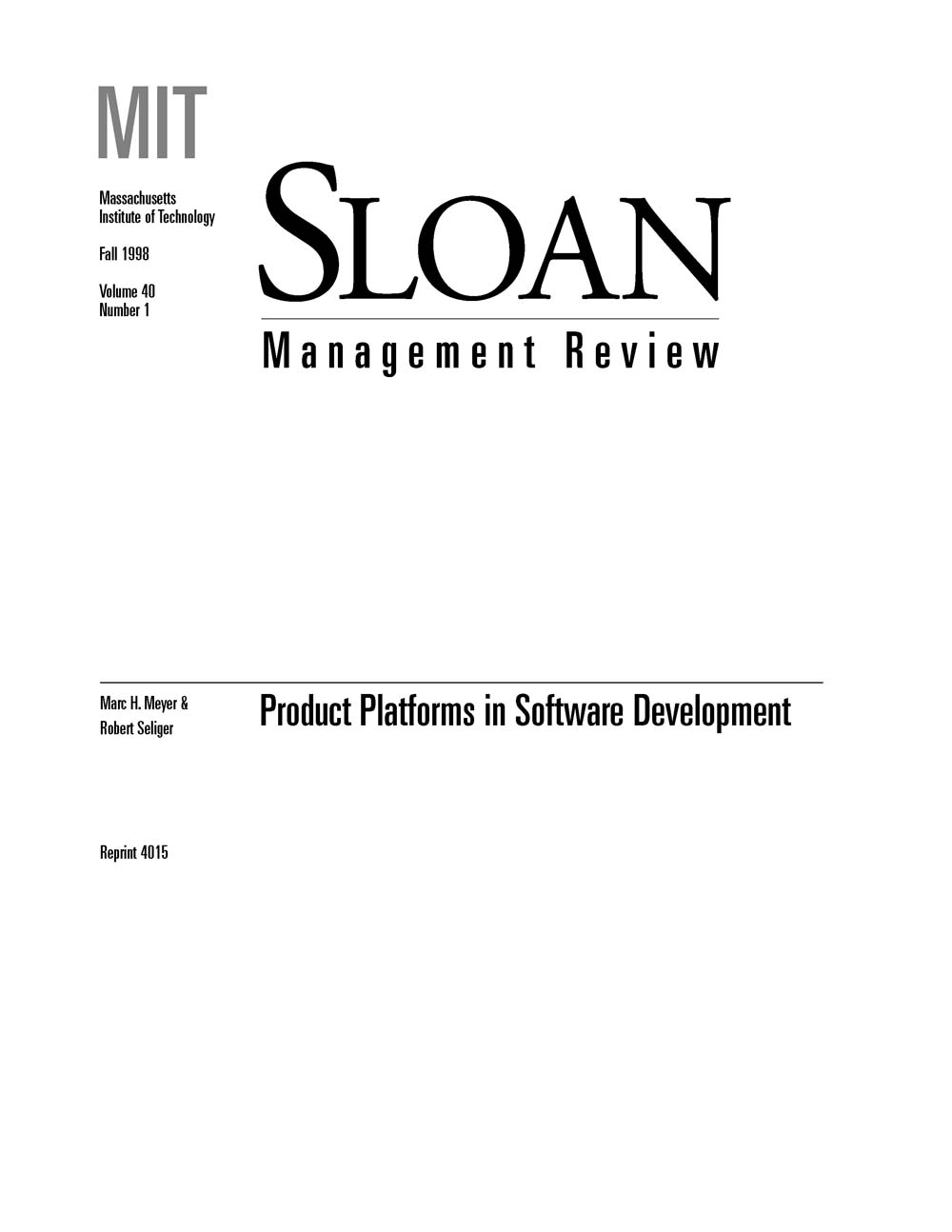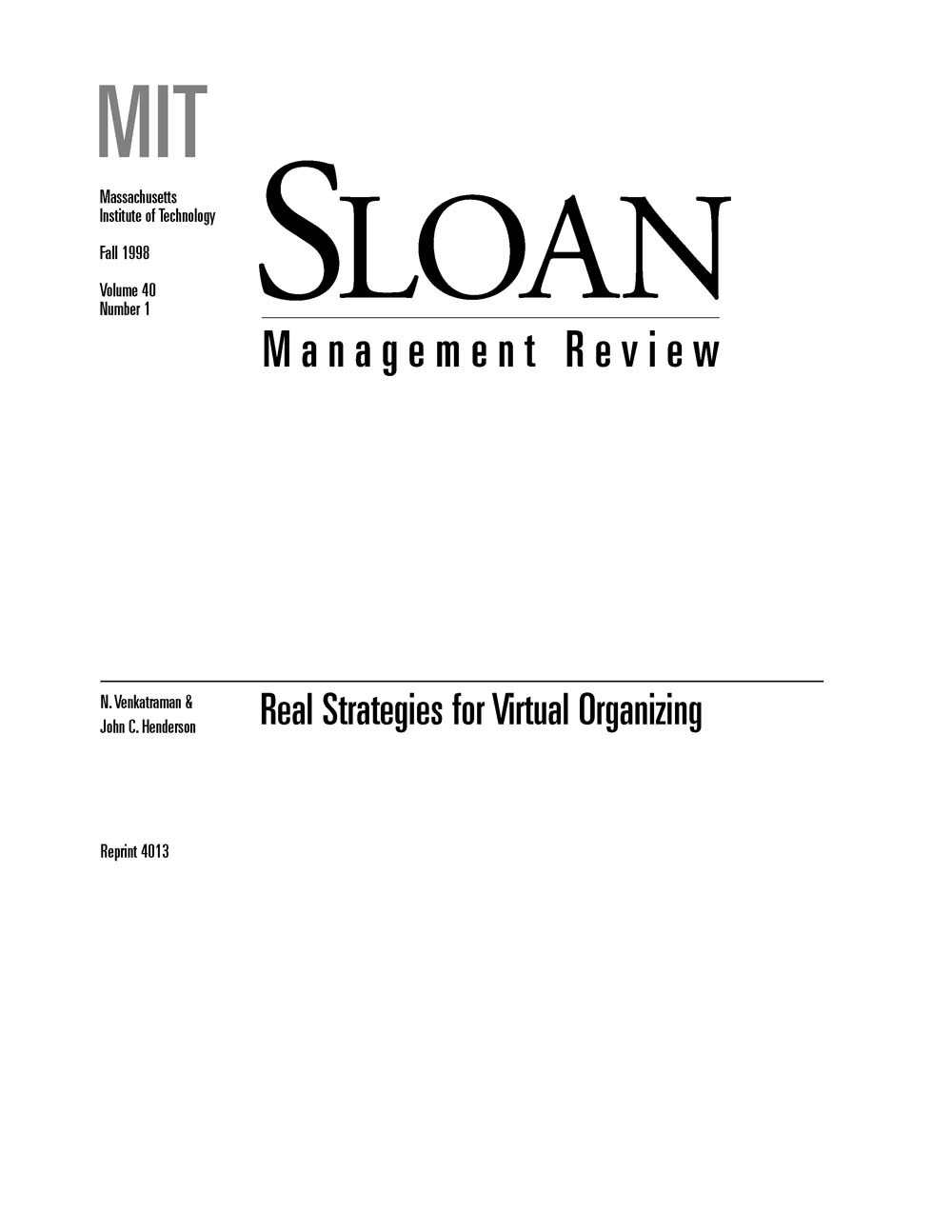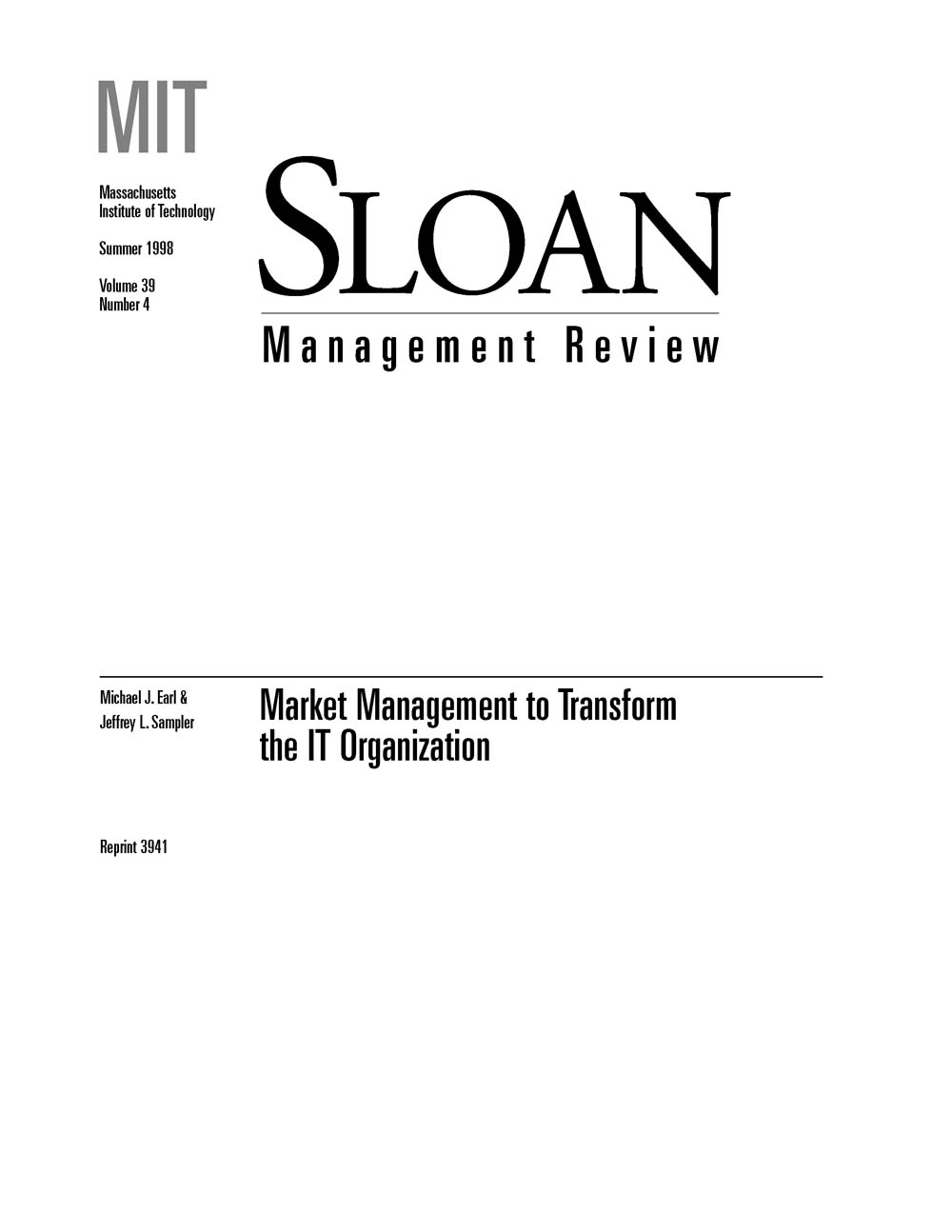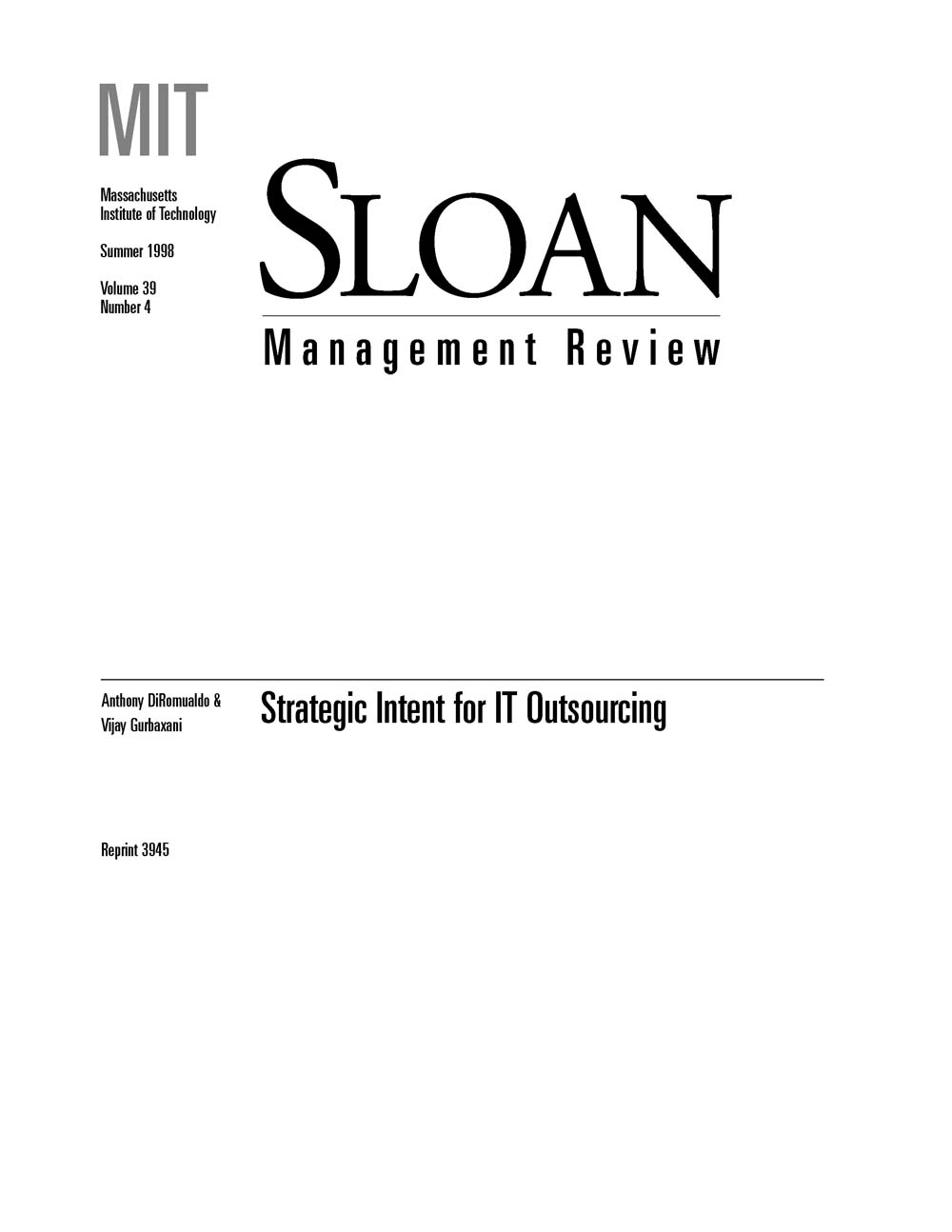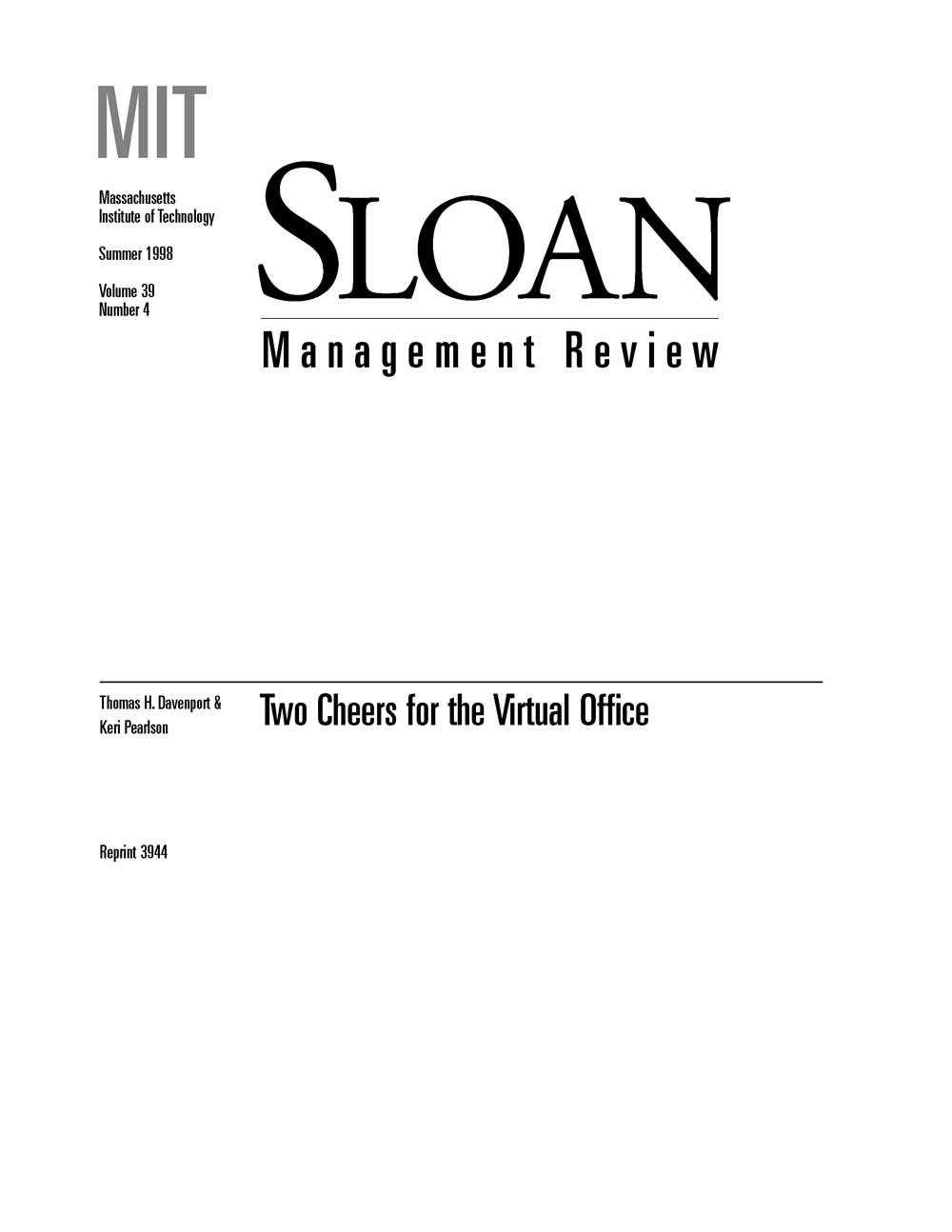Partnering with outsiders to speed innovation is increasingly the norm among high-tech companies. Then why are so many organizations still struggling to make such efforts work? The answer, say MIT Sloan School professor of management Edward B. Roberts and management consultant Wenyun Kathy Liu, is that all too often companies choose collaborative strategies without first considering what stage in the technology life cycle a given technology has entered & #8212; and which type of partnership is suited best to that stage. There are four phases in the life cycle of a technology (the fluid, the transitional, the mature and the discontinuities phases), and depending on where a particular technology is at the moment, only certain external partnerships will facilitate speedy development. That reality presents a challenge for managers: Each product a company is juggling may be in a different phase, and because the partnerships developed for one phase of one technology could eventually serve a different purpose in another phase of another technology, all partnerships must be handled with care. A decision to ally or acquire depends not only on company-specific competencies and needs, but also on overall market development and the company’s position relative to its competitors. Industry structure and critical success factors change as the underlying technology evolves and as competitive pressures vary. Companies are more inclined to form alliances as the technology becomes better defined and as competitive pressure increases. In the discontinuities phase, consolidation increases and the number of alliances declines. As for mergers and acquisitions, they often happen more frequently during the transition stage because established companies acquire startups to enhance their technology portfolio. In broadening past research (on the technology life cycle’s effect on internal product development) to encompass the externally focused technology life cycle, the authors also have underscored the growing complexity of achieving business success. The implication for management in high-tech industries is that leaders need to excel at multitasking, thinking laterally, thinking creatively and networking with individuals in various related industries. But all that starts with understanding the technology life cycle and what it means for outsourcing innovation.
Managing Technology P. 6
Page 13 of 15
-
Driving E-Business Excellence
In trying to bring about e-business transformation, companies have paid too much attention to technology & #8212; as if adding the right software or hardware could, on its own, bring about miracles. But systems do not work in a vacuum, and senior managers would do well to recognize the complementary nature of technology, business processes and e-business readiness throughout the value chain, from their suppliers to their customers. By taking a more holistic view, executives can turn these facets of a company’s operations into the drivers of e-business excellence. To help company leaders see the bigger picture, authors Anitesh Barua, Prabhudev Konana, Andrew B. Whinston and Fang Yin of the University of Texas at Austin’s McCombs School of Business developed a research-backed model of e-business value creation. The model’s premise is deceptively simple: that proper development of e-business drivers will lead to operational excellence, which will, in turn, generate improved financial performance. The authors explain that if managers are to lead a successful digital transformation, they must carefully track such e-business operational measures as the percentage of goods purchased online from suppliers and the percentage of customer-service requests handled through the Web site. Companies that scored high on those (and other) measures in the authors’ study also enjoyed significant increases in revenue per employee, gross profit margin, return on assets and return on investments. Once managers understand their company’s relative degree of e-business operational excellence, they can develop the drivers that will raise those scores. The authors guide readers through the eight drivers their research uncovered, from mastering supplier-related processes to optimizing IT applications aimed at customers.
-
E-Commerce Is Changing the Face of IT
Companies that heavily invested in Internet technologies are having second thoughts. They are realizing that the IT structure must mesh with business goals and be flexible enough to launch applications in months, sometimes weeks. Traditional IT models that emphasize back-office functions, yearlong development cycles and a separation of tasks are outmoded. Michael Earl and Bushra Khan of the London School of Business surveyed 24 companies engaged in e-commerce in the United States and United Kingdom and found that IT perceptions and practices are evolving rapidly. They also discovered marked differences in the way established brick-and-mortar companies, dot-com startups, and e-commerce boutique companies and spinoffs see the IT function. Today, companies recognize that IT can make or break the business. The separation between IT and “the business” is disappearing. Past IT models that focused on engineering, best practices and disciplined processes have given way to an enhanced spirit of freedom. Another shift relates to cost. Companies that once installed detailed IT cost metrics now perceive time, not cost, as the currency. The speed of decision making, applications development, design changes, implementation and technology adoption drives today’s IT function. Those changing perceptions manifest themselves in new practices. Short-term, rolling plans are replacing long-term strategies. Uniform technology platforms are ceding place to three-tier architecture: two tiers connected by middleware (for translating data messages between the two layers, for storing processing logic and data-handling subroutines, and for establishing a gateway between ephemeral systems and more-permanent ones). A new-venture outlook is widespread & #8212; and an aggressive use of short time spans. Some companies reported that they would not undertake any project likely to last more than three months. Also, companies are simplifying project management & #8212; even eliminating the use of project managers. Of those practices, rolling plans, new-venture development, three-tier architecture and multidisciplinary teams are key: the first two addressing faster development; the second two, the tensions between technological excellence and business value.
-
An Incremental Process for Software Implementation
Innovation researchers and software experts have long advocated incremental approaches to technology implementation. Fichman and Moses offer a strategy for guiding the implementation of advanced software technologies based on the principle of results-driven incrementalism (RDI), or self-contained implementation sequences -- each of which achieves a specific business result. The authors present an explicit process model and describe their experiences using the RDI strategy at Herman Miller, a large manufacturer of office furniture systems, which implemented supply-chain planning and scheduling software at six sites on time and within budget. No longer only a tool to automate or speed up ways of working, advanced software enables fundamentally new policies and work organizations. As a result, implementing technological process innovations involves learning and adjustment costs, which may exceed the raw purchase cost of the technology itself. The RDI approach benefits firms by promoting organizational learning via multiple, short-horizon goals; maintaining implementation focus and momentum by providing recurring visible results; and negating the common tendency to overengineer technology solutions -- all of which speed the realization of business results and reduce the risk of implementation failure. Consultants using the RDI approach found that some managers do not understand the benefits of self-contained implementation sequences and may consider such a process marginally valuable or impossible to use in their contexts. The authors cite five reasons for resistance and discuss ways to overcome it. The three critical success factors of the RDI approach are technology divisibility, technology and methodology fit, and technology and organization fit. Determining the most effective delivery process for a particular software technology requires ongoing R&;D by someone. The authors advocate that technology vendors view effective implementation processes as crucial to success and worthy of their R&;D efforts.
-
Product Platforms in Software Development
The concepts of product families, product platforms, and derivative products are as applicable to intangible software products as they are to tangible physical products. In both cases, firms can develop a family of products based on a common platform instead of starting from zero every time. Well-designed platform architectures for software products provide productivity benefits and enable rapid growth in market share and revenue. In addition, if the developer builds and communicates methods by which others can build modules that operate in or on the underlying platform, it can become the standard or basis of large-scale innovation, which provides significant strategic benefits. A product platform is a set of subsystems and interfaces that form a common structure from which a stream of derivative products can be efficiently developed and produced. The authors present a model of the architecture of software products and offer case examples showing platform design and management in action. Software developers adopting the product platform approach should form a dedicated team, supported by top management, to assess the organization's current situation and future potential. A market segmentation grid allows the team to document both market information and systems or product status information. In planning a new product platform, the team should understand target users' requirements; propose a new platform architecture and strategy; propose an implementation plan, budget, and time line; and propose an approach that allows for the joint design and sharing of platform components and development processes. Unless companies achieve an effective platform strategy, they are likely to face competitive disadvantages. The effort will require new ways of planning, budgeting, and organizing for systems development.
-
Real Strategies for Virtual Organizing
Current models of organizational strategy and structure fail to meet the challenges of the information age. Based on field study, the authors conceptualize an architecture, or guide, for virtual organizing that focuses on the importance of knowledge and intellect in creating value. Information technology lies at the heart of this business model for the twenty-first century. The authors' approach incorporates three interdependent vectors: customer interaction deals with new challenges and opportunities for company-to-customer interactions; asset configuration focuses on creating and deploying intellectual assets while sourcing physical assets from a complex business network; and knowledge leverage is concerned with opportunities for leveraging diverse sources of expertise within and across organizational boundaries. Each of the vectors in turn has three stages. Stage one focuses on task units such as customer service, purchasing, or new product development. Stage two focuses on coordinating activities to create superior value. Stage three focuses on the interorganizational network to design and leverage interdependent communities for innovation and growth. Each vector raises a distinct series of questions for managers. The overall challenge for companies is to harmonize the three vectors and to undertake external benchmarking when experimenting with different approaches to design.
-
Market Management to Transform the IT Organization
A four-stage model helps companies balance supply and demand in managing IT.
-
Strategic Intent for IT Outsourcing
Companies today are outsourcing the activities of their IS departments at unprecedented rates. Interviews with senior executives in fifty companies worldwide show that three kinds of strategic intent drive the decision to outsource. -- Companies pursuing IS improvement seek cost reduction, better performance from core IS resources, and the acquisition of new technical skills and competencies. -- Outsourcing for business impact focuses on deploying IT to improve critical aspects of business performance -- Outsourcing for commercial exploitation aims to leverage technology-related assets through the development and marketing of new technology-based products and services Each type of strategic intent requires different approaches and tactics in the areas of the contract type, the performance measurement and evaluation scheme, the compensation system, and the assignment of decision-making rights to the vendor. Since the nature of the risks and rewards for each of the three types is different, the control mechanisms must be different as well. In all cases, the customer's relationship with the vendor must be aligned with the strategic intent underlying the outsourcing initiative. When strategic intent is well understood and the critical issues are carefully addressed, the chances for success are greatly increased. In evaluating IT outsourcing opportunities and structuring relationships, managers should design the outsourcing contract to reflect and reinforce each strategic intent pursued; make sure that their organization and the vendor have the right mix of competencies and know-how; make sure that their organizational culture and work practices are compatible with those of the vendor; and enable continuity by designing contracts and relationships to anticipate change.
-
Two Cheers for the Virtual Office
Technology has made it possible to redefine where work is done. The "virtual office" offers companies and their workers many benefits: lower real estate costs, higher productivity, and increased flexibility. At the same time, organizations forfeit the benefits of the traditional office: a shared understanding of the corporate culture; a sense of loyalty; informal communication; access to people, information, and materials; and managerial control. Drawing on the results of field research, the authors discuss how firms can maximize the benefits while minimizing the losses of these alternative work arrangements. The authors identify five common arrangements: "telecommuting" refers to situations in which workers with fixed offices occasionally work at home; "hotel"-based workers come into the office frequently, reserving a cubicle where they can use the telephone and link their laptop computers to the network; the "tethered worker" has some mobility but reports to the office on a regular basis; "home" workers work entirely from a room in their homes; and "fully mobile" workers are on the road or at customer sites during the workday. Companies considering adopting virtual work must be clear about the type of virtual office that best addresses their needs and its advantages and disadvantages. If virtual work is to pay off, managers must adopt new approaches in five key areas: managing people, managing information, managing teams, managing processes, and managing facilities. Companies need to institute new information flows to replace those that are lost; educate workers on how to be more effective providers and consumers of information; provide training in virtual worker management skills and personal work strategies; and create dialogue on how to deal with changed family relationships. Effective management of alternative work arrangements means mixing virtual and nonvirtual offices. Companies should analyze the variety of approaches possible and their particular circumstances to determine just how much virtuality is appropriate.



